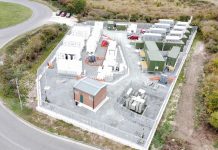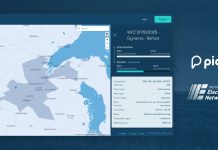
National Grid ESO believes it will be able to operate the power system with 100% renewable power – for periods at least – by 2025. But says it will need to “fundamentally change” the way it operates.
“Operating a zero-carbon electricity system in 2025, whenever there is sufficient renewable generation, is a major stepping stone to full decarbonisation of the entire electricity system; enabling new technologies and removing barriers to ever increasing levels of renewables,” said ESO director, Fintan Slye.
In order to achieve that goal, the system operator has to roll out new ways of managing system characteristics like inertia and voltage across the system. That means in some cases developing new markets, for system products that have not yet been designed, and it requires far more data to be handled to model the system.
The ESO said, “we need to fundamentally change how we plan, analyse and operate the electricity system and innovate in the development and deployment of new technologies, products and services. The development timeline includes plans to:
- Be able to use wind and solar to provide reserve and response services by 2020.
- Increase deployment of storage and its use in frequency markets.
- Define new ancillary services that deliver the inertia currently provide by rotating fossil plant, so that new markets for these services can be developed and put in place by 2022.
- Investigate existing and new technologies that can provide voltage support.
- Improve forecasting of wind and solar, along with embedded generation.
- Develop the ability to monitor and measure inertia and new network analysis tools that allow it to be modelled and different operating scenarios assessed in real time,
The ESO said that although this would be a step-change in grid operation, “We know, through approaches that we have had to date, that there are customers with the right technologies that can provide these services. Therefore, once we have identified and described the technical requirements of the network it should be possible to create the right products and market place.”
See details here.
A version of this story first published at our sister site, New Power.
Related stories:
National Grid mulls 10-year contracts for reactive power
National Grid confirms 2018-19 Triads
National Grid warns of ‘five years of missed opportunities’
DSR providers urge National Grid to go faster, Ofgem to go slower
National Grid and Epex Spot to collaborate on weekly FFR auction
Terre and BM: Elexon opens market entry process for aggregators
National Grid to trial same day FFR auction
National Grid to bring wind and solar into FFR, details balancing system overhaul
Can the Balancing Mechanism offset FFR price erosion?
National Grid outlines plans to bring all flex providers into Balancing Mechanism
National Grid outlines plans for hundreds of millions worth of services
National Grid calls for new reactive power providers in Mersey and South Wales
National Grid plots major overhaul of balancing services with frequency response first to change
National Grid mulls rolling all frequency response services into one
As renewable generation makes history, National Grid starts to feel the burn
Click here to see if you qualify for a free subscription to the print magazine, or to renew.
Follow us at @EnergystMedia. For regular bulletins, sign up for the free newsletter.
Follow us at @EnergystMedia. For regular bulletins, sign up for the free newsletter.




Does 100% RENEWABLE include biomass fed generation?
Will DSR from energy storage generation count as renewable, when the storage is charged by off peak charging sources of energy?
You deleted my last comment – I will have one more try.
You use the term inertia with reference to the national grid. Inertia means stored energy – they are equivalent. Rotating systems in the national grid can have inertia, or stored rotational energy by reason of their rotating parts.
A calculation for a 9MW wind turbine I carried out shows that its inertia would keep it going for less than 1 minute. Large ground-based generators will have similarly small amounts of inertia – that is the nature of all machines in the world.
Furthermore, if you removed the source of power from a steam turbine alternator set, its phase relationship with the mains supply would immediately change direction, and it would take power from the national grid instead, to keep itself in sync with the mains network. This is the nature of synchronous generators.
Both of these facts mean that inertia in the network is not in any way usable or useful for anything.
Accordingly, it is inappropriate to talk about it as if it is a useful asset, as in this article.
I believe that inertia is used for balancing the frequency of the grid rather than using it for energy for instance to restore voltage drop. If the frequency suddenly shifts from its range (50 ± 0.5Hz) then the inertia gives National Grid a small cushion, time-wise, to restore balance.